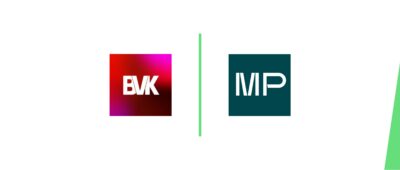
GETTING YOUR BUY-SIDE DEAL DONE – Indicative Offer
In this part of the series on “Getting your Buy-Side Deal Done” we will take a closer look at the Indicative Offer. After we have found potentially interesting targets in the first steps of the buy-side process, we are going to focus on the next step towards getting the deal done. After you have done a preliminary analysis of the target and the client decided that this could be interesting for him, it is time to release an Indicative Offer. By submitting the Indicative Offer, you reaffirm your acquisition interest as well as building a contractual negotiation framework for the further process. In this blog post, we will look at what are the “ins” and “outs” when preparing and submitting an Indicative Offer and what to look out for.
Analyzing the Target
After you have screened dozens of companies you finally found a company that is willing to sell its business or part of it. In the first step, before submitting the Indicative Offer, it is crucial to analyse the company and to provide your client with all the pros and cons of this investment. In this regard, you can structure the decision matrix along with three factors: Strategic Fit, Financial Performance and potential Synergies. First and foremost, the company has to fit your client’s strategy and the overall goal of the transaction. Broadly speaking, your client can look for Market Penetration, Geographical expansion or Product/End-Market Strategy. Your task is to assess if the target fits in one of those categories and how strong the fit is. For the financial performance part, it is vital that you understand how the company performed in the past, what drives the business and what could be achieved in the future. The last and probably also most controversially discussed part are the potential synergies of the transaction. While cost synergies are rather easy to frame and put into numbers, cross-selling or revenue upsides require more creativity from you. However, these can be an essential part to make a business case appealing even though it does not seem to be interesting at first glance.
Preparing the Indicative Valuation
Once the above-mentioned decision boxes are ticked and your client is convinced that this could be an interesting acquisition, you have to prepare the indicative valuation. As with every valuation, you would start to build a peer group universe and search for comparable transactions for the Multiple-based approach as well as preparing the financial model for a valuation based on the DCF method. Of course, at this stage of the process, the available information might be scarce which can sometimes limit the feasibility of some valuation methods. Once you finished your valuation work, you will present the findings to your client, for example in a football field chart, and decide collectively on an indicative valuation. The final purchase price will be finally determined based on the outcome of the Buy-Side Due Diligence.
Documenting Assumptions and Conditions
Apart from the indicative valuation, the Indicative Offer also includes a description of the material assumptions of the business. As your business case and the Indicative Offer are mainly based on these assumptions, they must be confirmed by your client throughout the Due Diligence phase. Furthermore, you will outline your client’s rationale and plans for the business, which you already assessed in the decision matrix. Another important segment of the document is the principal conditions section where you describe all conditions which must be met and agreed to proceed with the process. In the last part of the Indicative Offer, you will provide the target with a brief overview of what you expect from the Due Diligence phase to be able to confirm all the assumptions made.
After you have compiled all information, the Indicative Offer is polished up and ready to be sent to the target. Once the Indicative Offer is sent and agreed upon by both parties, you will enter the next phase of the process: Due Diligence.
The latest information about MP
Ready to start?!
Our teams of specialised dealmakers and ambitious M&A
challengers, are ready to take on your challenge – and exceed your expectations, every day.
- Market leader in industrial M&A
- 700+ industrial M&A projects
- 75+ professionals form the largest industrial M&A team
- Adding credibility to your deal
- Maximising your value with our challenger mindset



